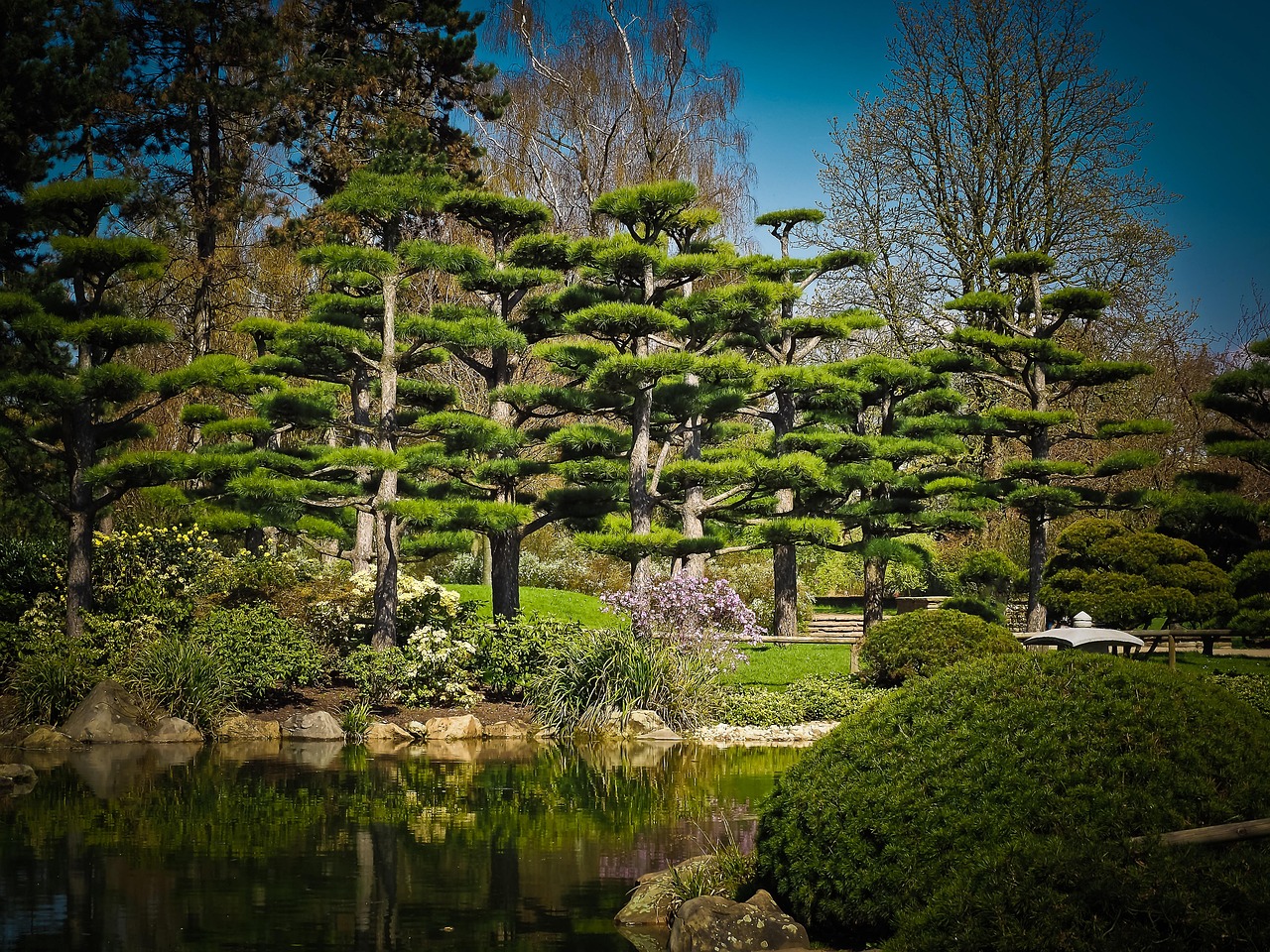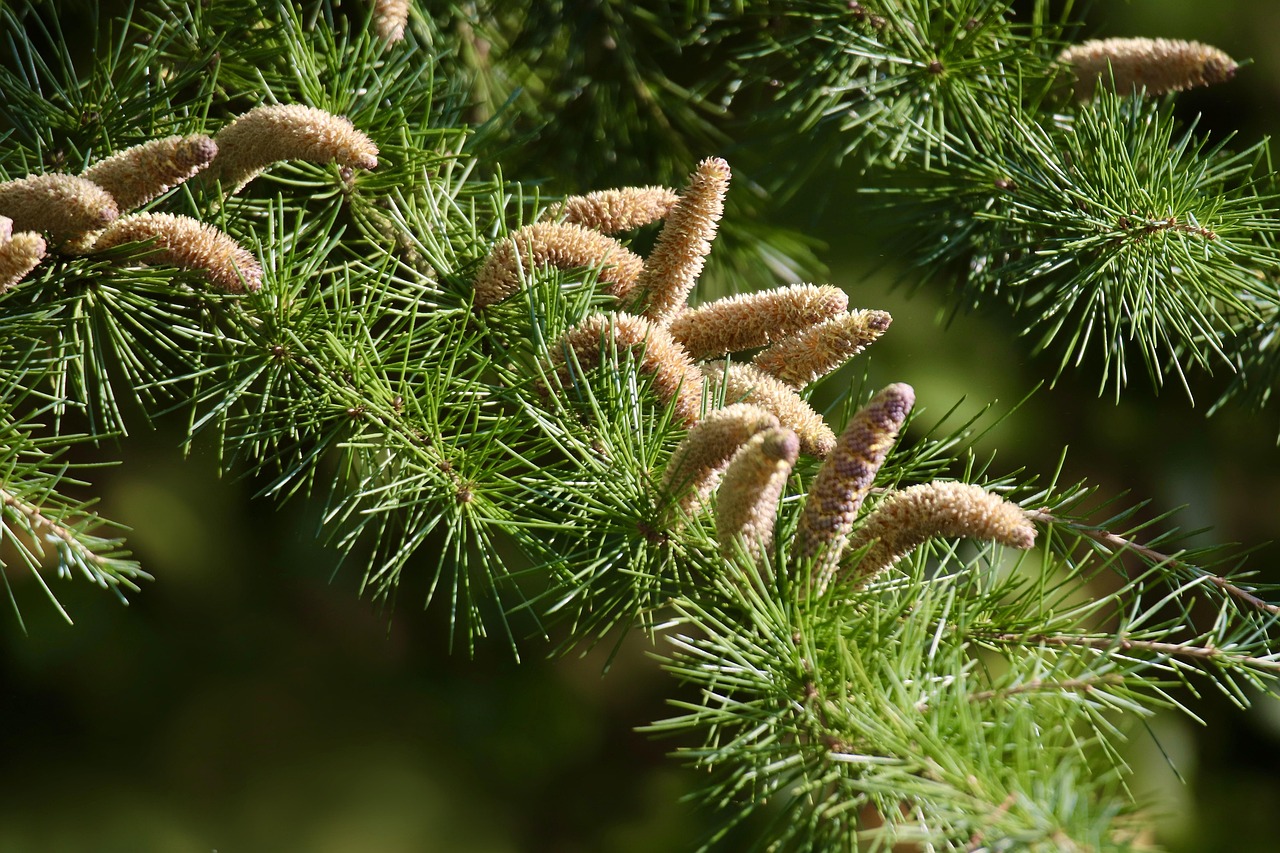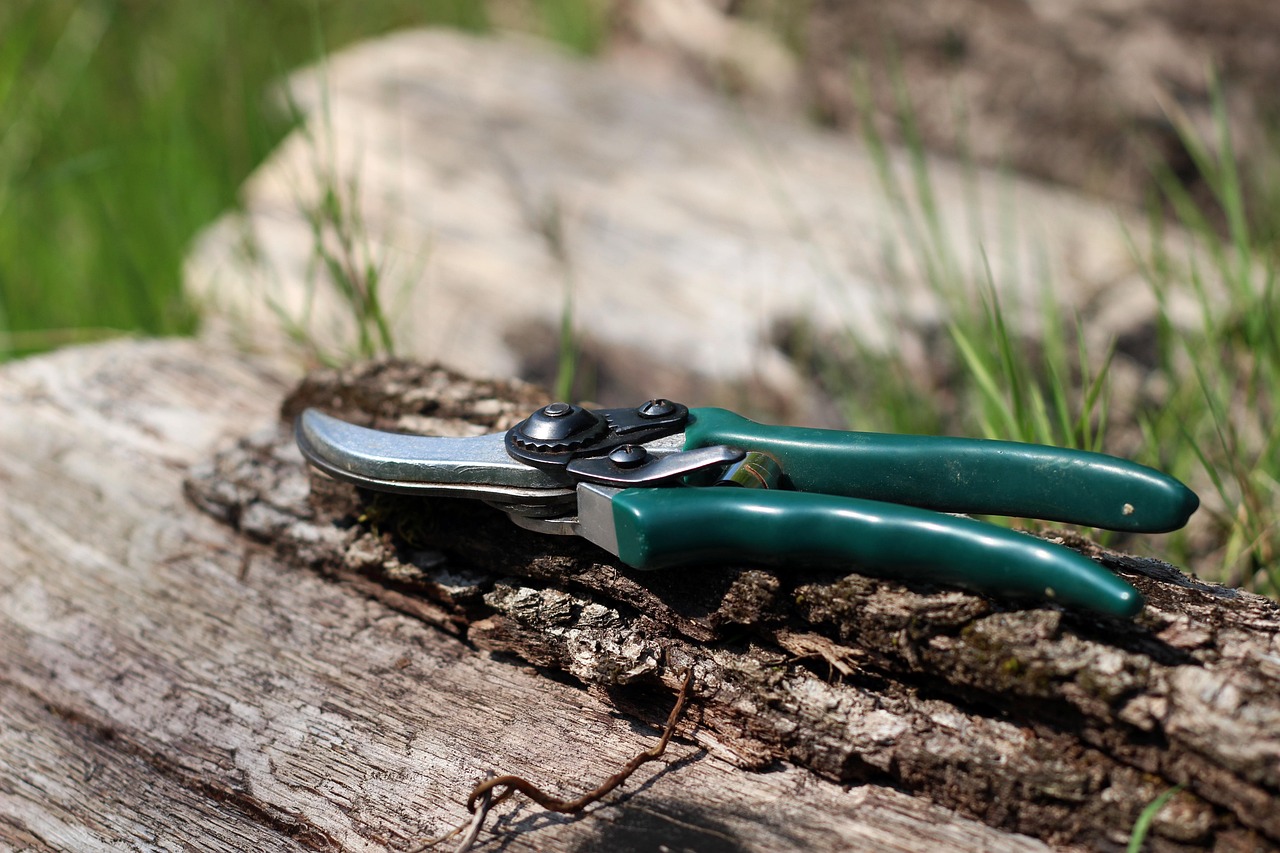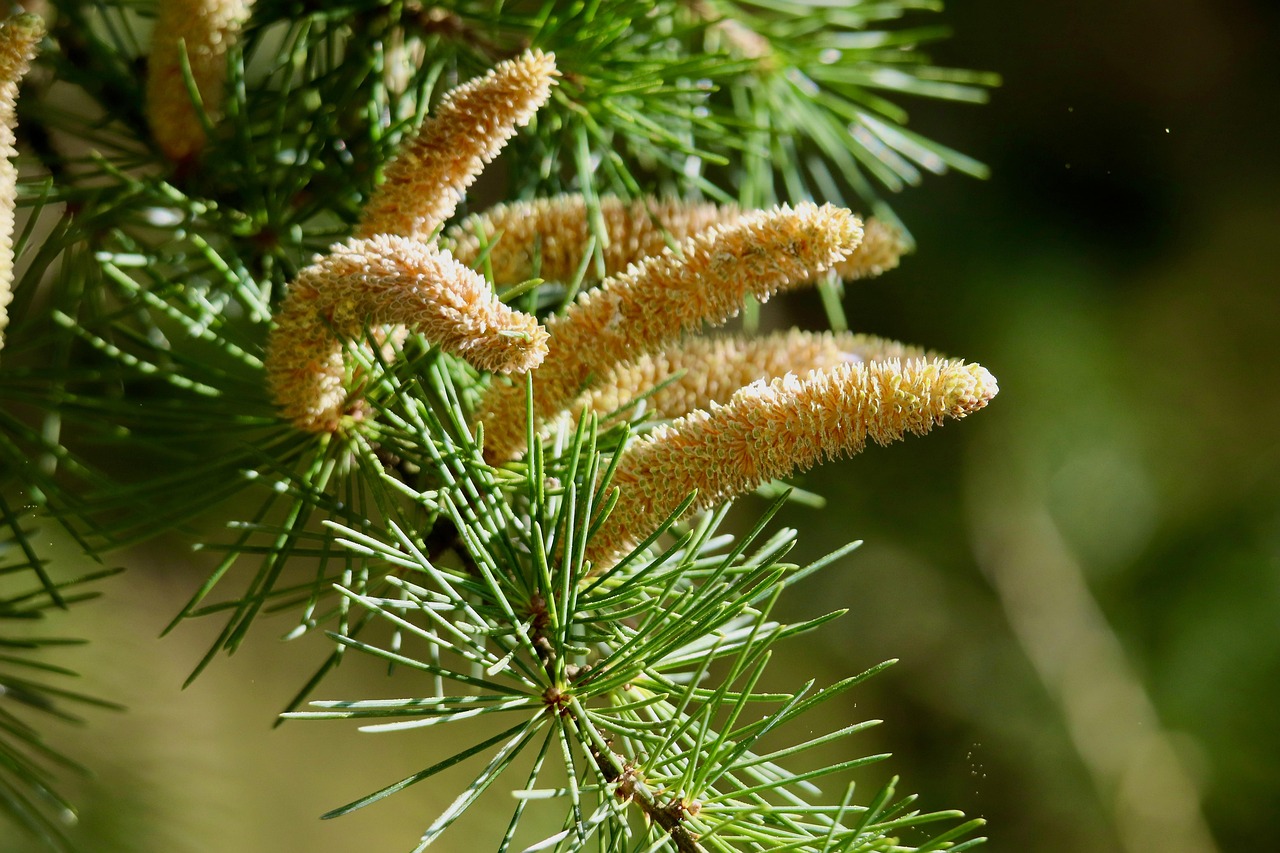Pruning Japanese cedar trees in shaded gardens is essential for maintaining their health and shape. Regular pruning encourages new growth, prevents overcrowding, and enhances air circulation. Proper techniques ensure the tree remains aesthetically pleasing while thriving in its environment.
Japanese cedar trees, known scientifically as Cryptomeria japonica, are popular choices for gardens due to their graceful appearance and evergreen foliage. These trees can grow quite tall, reaching heights of up to 100 feet. They are well-suited for a variety of climates but thrive particularly well in shaded areas. However, to ensure they maintain their beauty and health, regular pruning is necessary.

Pruning is not only about cutting branches; it is an art that involves understanding the tree’s growth patterns and health requirements. In shaded gardens, Japanese cedar trees may face competition for light from surrounding plants. This competition can lead to uneven growth or excessive density. Therefore, strategic pruning helps to manage these factors effectively.
Understanding Japanese Cedar Growth
Before embarking on pruning efforts, it’s essential to understand the growth habits of Japanese cedar trees. These trees typically exhibit a pyramidal shape when young but can develop a more irregular form as they age. Their growth can be influenced by several factors, including light availability, soil quality, and moisture levels.
Japanese cedar trees have soft, needle-like leaves that give them a unique texture. They also produce small cones that can add interest to the garden. The following table summarizes key details about Japanese cedar trees:

| Characteristic | Description |
|---|---|
| Scientific Name | Cryptomeria japonica |
| Height | Up to 100 feet |
| Width | 20 to 30 feet |
| Light Requirements | Partial shade to full sun |
| Soil Type | Well-drained, acidic soil |
| Water Needs | Moderate; prefers consistent moisture |
When growing in shaded areas, these trees may develop a more elongated growth pattern as they reach for sunlight. This can lead to an uneven canopy if not managed through pruning. The aim of pruning is to encourage a balanced shape while removing any dead or diseased branches.
When to Prune Japanese Cedar Trees
The timing of pruning is crucial for the health of Japanese cedar trees. The best time to prune is during the late winter or early spring before new growth begins. This timing allows for healing before the growing season starts. Pruning during late summer can also be effective but should be done cautiously, as the tree may be stressed from heat.
Avoid pruning in late fall or winter when the tree is dormant. Pruning during this period can expose fresh cuts to harsh weather conditions, which may lead to damage or disease. Always assess the local climate and seasonal changes when planning your pruning schedule.

Pruning Techniques for Japanese Cedar Trees
Employing the right pruning techniques is vital for maintaining the health and aesthetics of Japanese cedar trees. Here are some essential techniques to consider:
- Thinning: Remove crowded branches to improve air circulation and allow light penetration.
- Heading: Cut back longer branches to promote bushier growth and maintain shape.
- Cleaning: Remove dead or diseased branches at their point of origin to prevent the spread of disease.
- Shaping: Trim branches to maintain a uniform shape and size throughout the canopy.
Each technique serves a specific purpose. Thinning enhances overall tree health by reducing overcrowding. Heading encourages denser foliage at the tips of branches, while cleaning ensures that no dead matter remains that could harbor pests or diseases.
When using pruning tools, make sure they are sharp and clean. This helps make clean cuts and reduces the risk of infection. Always make cuts at a slight angle to encourage water runoff and prevent rot.

Tools Needed for Pruning
Having the right tools is essential for effective pruning. Here are some tools commonly used for pruning Japanese cedar trees:
- Hand Pruners: Ideal for small branches up to ¾ inch in diameter.
- Loppers: Great for thicker branches up to 2 inches in diameter.
- Saws: Use a pruning saw for larger cuts or when removing entire branches.
- Gloves: Protect your hands from sap and sharp edges.
- Ladder: If your tree is tall, a sturdy ladder will help you reach higher branches safely.
Using the right tools will make your pruning tasks easier and more efficient. Remember to clean tools with rubbing alcohol before and after use to minimize the risk of disease transmission between plants.
Following these guidelines will help ensure your Japanese cedar trees remain healthy, attractive, and well-maintained in your shaded garden. Proper pruning not only enhances the aesthetic value of your garden but also contributes significantly to the overall health of these magnificent trees.
Common Issues with Japanese Cedar Trees in Shaded Areas
While Japanese cedar trees are resilient, they can face specific challenges when grown in shaded gardens. Understanding these issues is essential for effective pruning and overall care. Here are some common problems to look out for:
- Overcrowding: In shaded areas, competition for light can lead to overcrowded branches. This can stunt growth and affect the tree’s shape.
- Pest Infestation: Trees that are not receiving adequate sunlight may be more susceptible to pests like aphids and spider mites.
- Diseases: Poor air circulation due to dense foliage can promote fungal diseases such as root rot or needle blight.
- Uneven Growth: When trees grow towards available light, they may develop an uneven canopy, requiring strategic pruning to maintain balance.
Identifying these issues early allows for timely intervention, which is crucial for maintaining the tree’s health. Regular inspections can help you catch problems before they escalate.
Recognizing When to Prune
Knowing when to prune is just as important as the techniques used. Here are some signs that indicate it may be time to prune your Japanese cedar trees:
- Dead or Dying Branches: If you notice any branches that are brown or brittle, it’s time to remove them.
- Excessive Density: If the tree looks bushy or crowded, thinning out some branches will improve light access and air circulation.
- Diseased Areas: Any signs of disease, such as discoloration or unusual growths, should be addressed immediately.
- Unwanted Growth: If branches are growing into pathways or other plants, they should be pruned back to enhance aesthetics and functionality.
Regularly monitoring your tree will help you determine the best times for pruning and ensure that the tree remains healthy and attractive.
Pruning Techniques for Specific Problems
Different issues require different approaches to pruning. Here’s how to address common problems with targeted techniques:
Dealing with Overcrowding
If your Japanese cedar tree has become too dense, consider the following steps:
- Identify the branches that are crossing each other or growing inwards.
- Use hand pruners or loppers to cut these branches back to a healthy outward-facing bud.
- Aim to maintain an open center to allow light penetration and air flow.
Addressing Pest Issues
Pests can weaken your tree if not managed properly. To control infestations:
- Inspect the foliage regularly for signs of pests.
- If pests are found, prune affected areas first to reduce their population.
- Consider applying insecticidal soap or neem oil after pruning to further manage the infestation.
Treating Fungal Diseases
If you notice signs of fungal infections, follow these steps:
- Remove any infected branches immediately to prevent the spread of disease.
- Ensure that tools are disinfected after cutting diseased wood.
- Improve air circulation by selectively thinning crowded areas.
Seasonal Care After Pruning
The care you provide your Japanese cedar tree after pruning is crucial for its recovery and growth. Here are some seasonal care tips:
Spring Care
After pruning in late winter or early spring:
- Monitor new growth closely. Ensure that it develops evenly across the tree.
- Fertilize with a balanced slow-release fertilizer to support new growth.
- Water consistently, especially during dry spells, to help establish new growth.
Summer Care
During the summer months:
- Continue regular watering, particularly if there is a lack of rainfall.
- Watch for signs of pests and diseases; early intervention is key.
- Avoid heavy pruning during this season, as it can stress the tree.
Fall Care
As autumn approaches:
- Rake up fallen needles and debris around the base of the tree to prevent diseases.
- Apply a layer of mulch around the base to retain moisture and regulate temperature during winter.
- If necessary, perform light pruning to shape the tree before winter dormancy.
Winter Care
In winter, focus on protecting the tree from harsh conditions:
- Avoid heavy snow accumulation on branches; gently brush off snow if necessary.
- If extreme cold is expected, consider wrapping young trees with burlap for insulation.
- Avoid pruning during this period, as the tree is dormant and susceptible to damage.
Caring for your Japanese cedar tree throughout the seasons will help ensure its health and longevity. Pruning is just one aspect of maintaining these beautiful trees in shaded gardens, but it plays a vital role in their overall well-being. Proper attention and care will lead to a thriving and attractive garden landscape.
Advanced Pruning Techniques for Japanese Cedar Trees
As you become more experienced with pruning Japanese cedar trees, you may want to explore advanced techniques. These methods can enhance the tree’s structure and health, especially in shaded environments. Understanding the purpose behind each technique will guide you in making informed decisions.
Structural Pruning
Structural pruning focuses on shaping the tree to promote a strong framework. This technique is especially useful for younger trees that need guidance in their growth pattern. Here are key steps to follow:
- Identify the Leader: The leader is the main vertical stem of the tree. Ensure it is straight and dominant among other branches.
- Select Scaffolding Branches: Choose 3 to 5 strong branches that will serve as the primary scaffolding for the tree. These should be evenly spaced around the trunk.
- Remove Competing Leaders: Eliminate any branches that compete with the leader to prevent splitting and ensure upward growth.
- Encourage Lateral Growth: Trim back any branches that grow too close to the center of the tree, allowing space for lateral growth.
This method strengthens the tree’s structure and ensures it can withstand strong winds and heavy snow, particularly important in shaded gardens where trees may be more vulnerable.
Crown Thinning
Crown thinning is another advanced technique that reduces the density of the tree’s canopy. This technique improves light penetration and air circulation, which is essential for trees in shaded areas. To perform crown thinning:
- Evaluate Dense Areas: Identify sections of the crown that are overly dense and block light from reaching inner branches.
- Selective Pruning: Carefully prune away smaller branches throughout the dense sections, focusing on those that cross or rub against one another.
- Maintain Balance: Ensure that thinning does not lead to an unbalanced appearance. Step back frequently to assess overall shape during the process.
Crown thinning should be done gradually over several seasons to avoid stressing the tree.
Understanding Growth Patterns and Timing
The growth patterns of Japanese cedar trees can differ based on environmental factors. Understanding these patterns will help you choose the right timing for pruning activities.
Growth Phases
Japanese cedar trees typically experience two main growth phases:
- Spring Growth: This phase begins as soon as temperatures rise and daylight hours increase. New shoots emerge, making it a key time for pruning.
- Summer Growth: Active growth continues through summer, but this period is best for light maintenance rather than heavy pruning.
Recognizing these phases allows you to optimize your pruning schedule, enhancing growth without hindering development.
Seasonal Timing for Advanced Techniques
For advanced pruning techniques, timing is essential:
- Early Spring: Ideal for structural pruning as the tree prepares for new growth.
- Late Summer: A good time for crown thinning to minimize stress while allowing continued growth.
- Autumn: Avoid heavy pruning during this season; focus instead on maintenance tasks like cleaning up debris.
Pest and Disease Management During Pruning
Pest and disease management is a crucial aspect of maintaining healthy Japanese cedar trees. Pruning can inadvertently expose trees to potential pathogens if not executed with care. Here’s how to manage these risks:
Pest Prevention Strategies
Implementing preventative measures can significantly reduce pest infestations:
- Regular Inspections: Examine your trees routinely for signs of pests such as webbing or discolored needles.
- Avoid Wounded Trees: Limit pruning during peak pest seasons to minimize stress and susceptibility.
- Healthy Practices: Maintain tree health through proper watering, fertilization, and mulching, making them less attractive to pests.
Disease Prevention Measures
Diseases can spread rapidly in shaded environments where moisture levels are higher. To mitigate this risk:
- Clean Cuts: Make clean cuts when pruning to reduce injury and minimize infection points.
- Avoid Overcrowding: Regularly thin out branches to improve airflow, decreasing humidity around the foliage.
- Use Fungicides: If necessary, apply fungicides during early spring to prevent fungal diseases before they start.
The Role of Mulching in Tree Health
Mulching plays a significant role in maintaining the health of Japanese cedar trees, particularly in shaded gardens. Proper mulching practices can support growth and reduce competition from weeds.
Benefits of Mulching
The following benefits highlight why mulching is essential for your Japanese cedar trees:
- Moisture Retention: Mulch helps retain soil moisture, reducing competition during dry spells.
- Weed Control: A thick layer of mulch suppresses weed growth, minimizing competition for nutrients.
- Temperature Regulation: Mulch insulates the soil, helping to keep root systems stable during temperature fluctuations.
Best Practices for Mulching
To maximize the benefits of mulching, follow these best practices:
- Select Appropriate Material: Use organic materials like wood chips or bark mulch that will decompose over time.
- Avoid Piling Against Trunk: Keep mulch away from direct contact with the trunk to prevent rot and pest infestations.
- Mantain Thickness: Aim for a 2-4 inch layer of mulch around the base of the tree for optimal effectiveness.
Maturing your understanding of these advanced techniques, seasonal care strategies, and preventive measures will enhance your ability to maintain healthy, beautiful Japanese cedar trees in shaded gardens. Each aspect plays a vital role in ensuring the longevity and vitality of these magnificent trees within your landscape.
Maintaining the Aesthetics of Your Shaded Garden
In addition to ensuring the health of your Japanese cedar trees, maintaining their aesthetic appeal is crucial for creating a beautiful shaded garden. Well-maintained trees can enhance the landscape, providing a serene environment. Here are some additional tips to keep in mind:
Design Considerations
When planning your shaded garden, consider the following design elements:
- Layering: Use a combination of tree heights and types to create depth. Position taller Japanese cedar trees behind shorter shrubs or flowers to create visual interest.
- Color Contrast: Incorporate plants with contrasting foliage colors. The rich green needles of Japanese cedar can be complemented by flowering plants with vibrant blooms.
- Pathways: Design pathways that weave through the garden. This encourages exploration and appreciation of the beauty of your trees.
By thoughtfully designing the layout of your garden, you can enhance the visual appeal of your Japanese cedar trees while promoting a harmonious environment.
Incorporating Companion Plants
Choosing the right companion plants can significantly benefit your Japanese cedar trees. Some plants thrive in the same conditions and can help maintain soil health:
- Ferns: Many ferns thrive in shaded areas and can add texture to the landscape.
- Hostas: Known for their lush foliage, hostas work well in shaded gardens and come in various colors.
- Shade-Tolerant Ground Covers: Plants like creeping thyme or ajuga can help reduce weeds while adding beauty.
Companion planting can enhance the ecosystem of your garden, providing mutual benefits such as improved soil health and pest management.
Monitoring Tree Health
After implementing pruning and care strategies, ongoing monitoring is essential. Regularly check your Japanese cedar trees for signs of stress, disease, or pest infestations. Early detection is critical for effective management. Here are some tips for monitoring:
- Visual Inspections: Conduct routine checks on foliage and branches for any discoloration or unusual growth patterns.
- Root Health: Occasionally inspect soil around the base of the tree. Healthy roots should be firm and moist but not waterlogged.
- Pest Traps: Consider using sticky traps around your trees to monitor pest populations without chemical intervention.
By actively monitoring the health of your trees, you can take timely action to address any issues that arise.
Final Thoughts
Caring for Japanese cedar trees in shaded gardens requires knowledge and attention to detail. Pruning is a vital component that not only maintains tree health but also enhances the overall aesthetic appeal of your garden. By understanding growth patterns, employing advanced pruning techniques, and incorporating companion plants, you can create a thriving environment for these magnificent trees.
The importance of seasonal care cannot be overstated. Regular maintenance through proper watering, mulching, and pest management will ensure long-term health and beauty. Furthermore, thoughtful design considerations will allow you to maximize the potential of your shaded garden, creating a peaceful retreat that showcases the elegance of Japanese cedar trees.
As you implement these practices, remember that patience is key. Trees take time to grow and respond to care. With dedication and proper techniques, your Japanese cedar trees will flourish, enhancing your garden’s beauty for years to come.
In summary, pruning, seasonal care, aesthetic considerations, and health monitoring are all integral aspects of successfully managing Japanese cedar trees in shaded gardens. Embrace these strategies and enjoy the process of nurturing your landscape into a stunning sanctuary.
